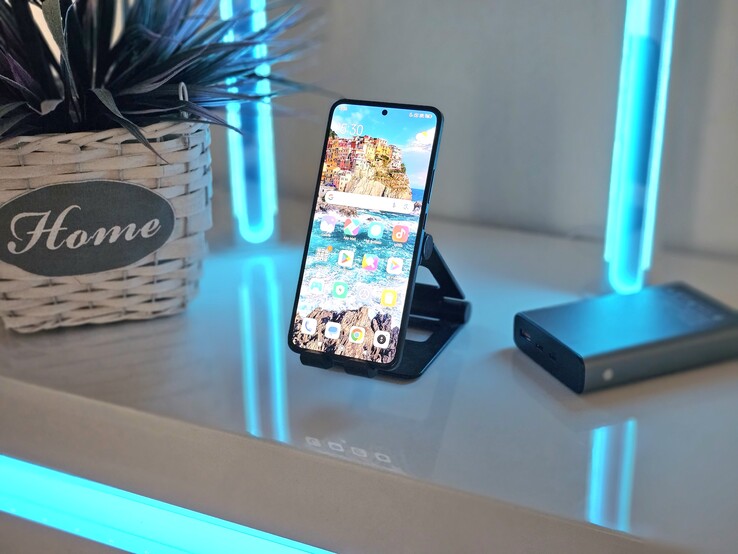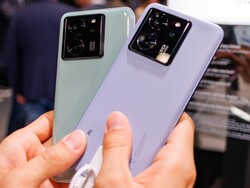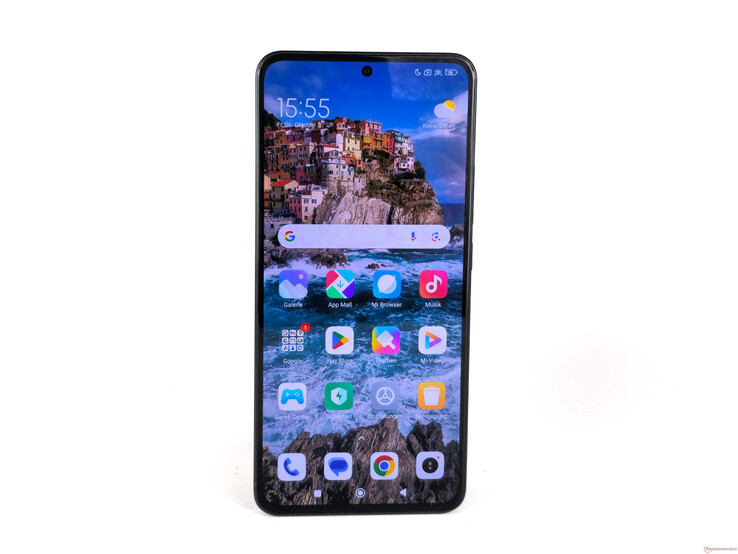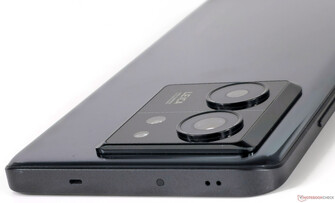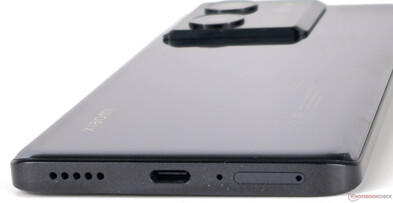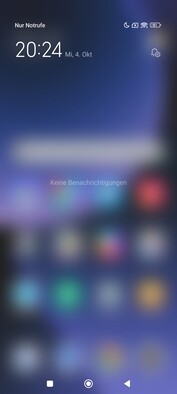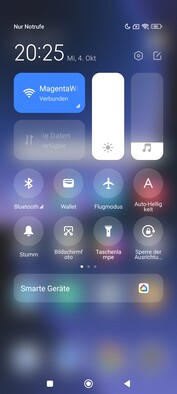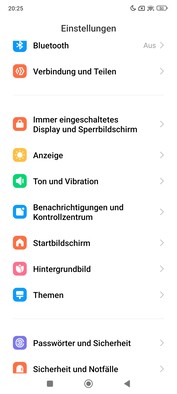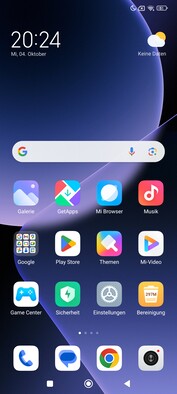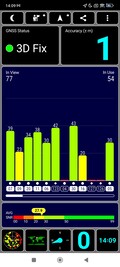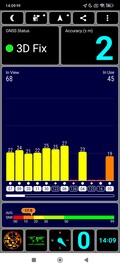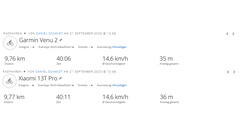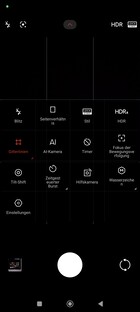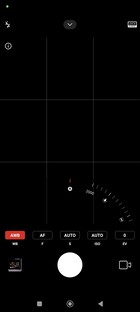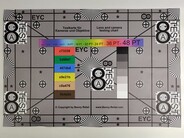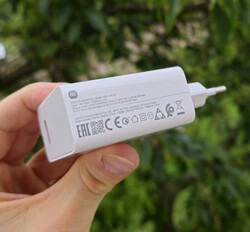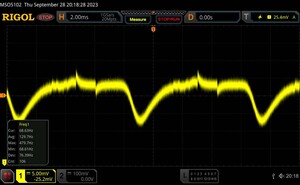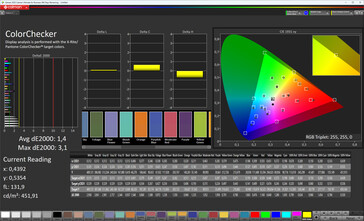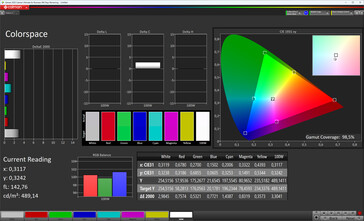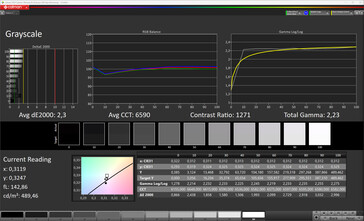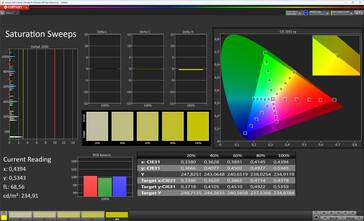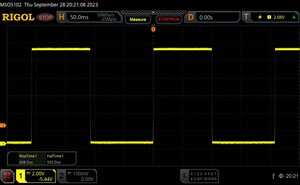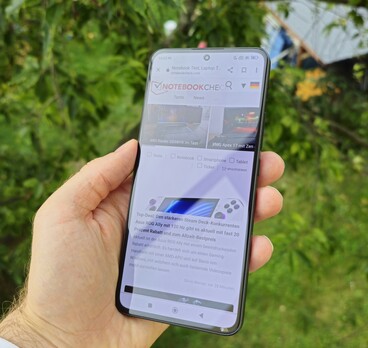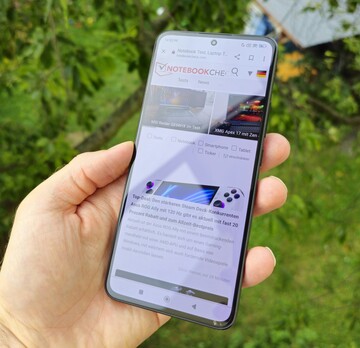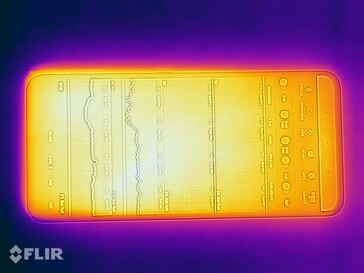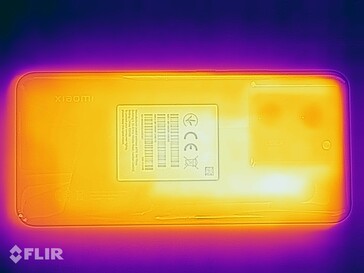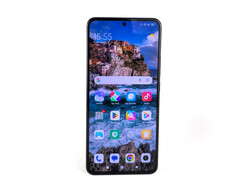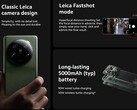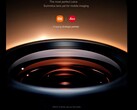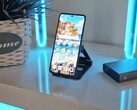Xiaomi 13T Pro review - The powerful smartphone with a Leica camera is all grown up
Xiaomi has taken a step further in the direction of sustainability when it comes to its 13T series - now offering five-year-long software support. Even the long update guarantee aside, the Chinese manufacturer has taken some new routes with its 13T Pro. For the first time, a T model can take advantage of the manufacturer's Leica partnership, which means its camera system is very different compared to its predecessor.
A big difference compared to the Xiaomi 13 Pro is the T model's chipset. The 13T Pro not only makes use of an SoC from Qualcomm, but it also uses the eight cores of the MediaTek Dimensity 9200+, which promises real flagship performance comparable with the Snapdragon 8 Gen 2.
Price-wise, the Xiaomi 13T Pro has an MRSP of around US$780 for the base model with 12 GB RAM and 256 GB storage. For the top-of-the-range version with 16 GB RAM and 1 TB storage, you will be looking to spend about US$1,000.
Possible competitors compared
Rating | Date | Model | Weight | Drive | Size | Resolution | Price |
|---|---|---|---|---|---|---|---|
| 88.1 % v7 (old) | 10 / 2023 | Xiaomi 13T Pro Dimensity 9200+, Immortalis-G715 MP11 | 206 g | 512 GB UFS 4.0 Flash | 6.67" | 2712x1220 | |
| 87.7 % v7 (old) | 11 / 2022 | Xiaomi 12T Pro 5G SD 8+ Gen 1, Adreno 730 | 205 g | 256 GB UFS 3.1 Flash | 6.67" | 2712x1220 | |
| 90.5 % v7 (old) | 03 / 2023 | Samsung Galaxy S23 SD 8 Gen 2 for Galaxy, Adreno 740 | 167 g | 128 GB UFS 3.1 Flash | 6.10" | 2340x1080 | |
| 89 % v7 (old) | 09 / 2023 | Sony Xperia 5 V SD 8 Gen 2, Adreno 740 | 182 g | 128 GB UFS 3.1 Flash | 6.10" | 2520x1080 | |
| 87.4 % v7 (old) | 07 / 2023 | Nothing Phone (2) SD 8+ Gen 1, Adreno 730 | 201.2 g | 256 GB UFS 3.1 Flash | 6.70" | 2412x1080 | |
| 89.4 % v7 (old) | 05 / 2023 | Motorola Edge 40 Pro SD 8 Gen 2, Adreno 740 | 199 g | 256 GB UFS 4.0 Flash | 6.67" | 2400x1080 |
Case – The Xiaomi smartphone with an IP rating
The Xiaomi 13T Pro not only features the design language of the Xiaomi 13 series, but also its IP68 certification, which helps the case to be water and dust resistant. You can choose between two high-shine color variants of the high-end phone, namely Meadow Green and Black, as well as a version with vegan leather called Alpine Blue. Compared to its glass back, the synthetic surface features a smooth and fine texture - plus, it isn't as big a fingerprint magnet. Whether the vegan leather lives up to the phone's claims of high value is in the eye of the beholder, but in our eyes, our black test device quickly attracted quite a bit of dirt.
Surrounding the 6.67-inch AMOLED panel are frames which, although they aren't symmetrical, are slightly thinner than on the 12T Pro. This leads the 2023 model to have a more efficient display-to-surface ratio of 87.5 per cent. In order to keep costs down, the manufacturer has continued to rely on cheaper Gorilla Glass 5 instead of Gorilla Glass Victus (1/2). The same as on its predecessor, the frames continue to be made from plastic.
Our test sample's build quality is top-class and the installed buttons sit nice and firm within the frame. We noted no gaps - and in general, have nothing to critique.
Connectivity – The Xiaomi 13T Pro with an IR blaster
The 13T Pro is no champion when it comes to connectivity but even so, the Xiaomi phone sports a decent list of features, including NFC, Bluetooth 5.4, USB OTG including Miracast, and an IR blaster. Its slower USB standard (2.0) is what sets it apart from the high-end fraction - it doesn't support wired image output. In our copying test using a connected M2 SSD (Samsung 980 Pro), our test sample's USB port achieved very low transfer rates of 40 MB/s. However, the data systems exFAT, as well as NTFS (which is preferred by Microsoft systems), are supported by the 13T Pro.
Our test sample's UFS 4.0 storage has a capacity of 512 GB, of which the user has 463 GB free to use. The internal storage cannot be expanded, meaning users that need a lot of storage will have to go for the 1-TB model.
Software – The Xiaomi phone with Android 13
Xiaomi sets out to give its high-end phone four years of software updates - and safety patches will even be supplied for a year longer. This means the Chinese manufacturer is finally on the same level as Samsung, though Xiaomi hasn't commented on how often per quarter the updates will be rolled out.
The 13T Pro's operating system was based on Android 13 during our test period and the latest safety patch was from September 2023. The manufacturer's own MIUI is installed on top, which comes pre-installed with a lot of third-party apps - thankfully, these can be uninstalled.
Communication and GNSS – The Xiaomi smartphone with WiFi 7
The Xiaomi 13T Pro achieves amazing speeds thanks to its WiFi 7 support - the corresponding counterpart provided. However, we also achieved high transfer rates of over 1,600 MBit/s within the 6 GHz frequency using our reference router (Asus ROG Rapture GT-AXE11000). These high rates were also stable for the most part.
Aside from its fast WLAN, the high-end smartphone is 5G enabled - but without mmWave support. In turn, its 4G frequency support is massive - it supports a variety of LTE bands and all the relevant frequencies are covered. The phone should also be well-equipped for trips abroad.
| Networking | |
| Xiaomi 13T Pro | |
| iperf3 receive AXE11000 | |
| iperf3 transmit AXE11000 | |
| iperf3 transmit AXE11000 6GHz | |
| iperf3 receive AXE11000 6GHz | |
| Xiaomi 12T Pro 5G | |
| iperf3 receive AXE11000 | |
| iperf3 transmit AXE11000 | |
| Samsung Galaxy S23 | |
| iperf3 receive AXE11000 | |
| iperf3 transmit AXE11000 | |
| iperf3 transmit AXE11000 6GHz | |
| iperf3 receive AXE11000 6GHz | |
| Sony Xperia 5 V | |
| iperf3 receive AXE11000 | |
| iperf3 transmit AXE11000 | |
| Nothing Phone (2) | |
| iperf3 transmit AXE11000 6GHz | |
| iperf3 receive AXE11000 6GHz | |
| Motorola Edge 40 Pro | |
| iperf3 transmit AXE11000 6GHz | |
| iperf3 receive AXE11000 6GHz | |
| Average of class Smartphone | |
| iperf3 receive AXE11000 | |
| iperf3 transmit AXE11000 | |
| iperf3 transmit AXE11000 6GHz | |
| iperf3 receive AXE11000 6GHz | |
We tested the 13T Pro's locating abilities on a test bike trip - we took the Garmin Venu 2 with us as well to compare. The route we took may have only been recorded as being 10 metres longer by the Xiaomi smartphone but when you take a more detailed look, you can identify a few smaller inaccuracies. The Garmin watch was more accurate, however, the Xiaomi phone is still totally sufficient for everyday navigating.
The Xiaomi 13T Pro uses Dual-Band GNSS to determine your location and all the following satellite networks are supported: GPS (L1+L5), Glonass (L1), Galileo (E1+E5), BeiDou (B1+B2) and SBAS. In everyday use, satellite locating works fast and it is even accurate indoors.
Telephone functions and call quality – The Xiaomi 13T Pro with dual-SIM support
The Xiaomi 13T Pro offers full dual-SIM support with two Nano SIM card slots, as well as the option to connect an eSIM to the system. Functions such as VoLTE and WLAN calls are also on board.
Both of the installed microphones make for a pleasant call experience - unfortunately impacted a little by some background noise. Even so, ambient noise suppression works sufficiently. Call quality is very good when you hold the phone up to your ear, however, it could do with being a bit louder.
Cameras – The Xiaomi smartphone features 50 MPix
The 13T Pro has access to a completely new camera system compared to its predecessor - on the back as well as on the front. Its new 20-MPix selfie camera may not have an autofocus feature, however, it offers lots of settings in turn. Videos can still only be recorded in Full HD and at 30 fps. Photos on the front-facing camera are a little overexposed, but they are depicted sharply.
As the 13T Pro can take advantage of the manufacturer's partnership with Leica, it also has access to the two photo styles "Leica Authentic Look" and "Leica Vibrant Look", which take photos using a natural color depiction or with stronger contrast levels and emphasized shadows. Furthermore, you can find multiple Leica filters within the camera's settings, including new filters such as Leica Blue, which is modelled after the Leica M240 film type.
The camera system on the back of the phone features a 50-MPix main camera with OIS and a Leica Summicron lens including an aspheric lens. Images taken using the Sony IMX707 are particularly better lit in dark surroundings and are even sharper than on the 200-MPix lens of its predecessor. Even in daylight, photos taken on the 13T Pro are really great. Contours are slightly less smoothed out and artificially sharpened than on the Pixel 7 Pro or the Galaxy S23 - but this is rather an advantage. The Xiaomi phone also captures details well, such as the roof tiles in our example photo.
The main camera with a 24 mm equivalent focal length is expanded with the help of a 50 MPix telephoto lens (50 mm) featuring 2x lossless zoom, as well as a 12-MPix ultra-wide angle lens (15 mm). While the telephoto lens impressed us with good photos at low zoom levels, the ultra-wide angle is one of the Leica Vario Summicron lens' weaknesses.
When it comes to video, the 13T Pro also benefits from the new 10-bit LOG video recording (UHD) and 8K quality. HDR video recording with HDR10+ is also possible up to 4K and at 30 fps. Moreover, users have the option to import their preferred color style onto the 13T Pro via the LUT color assignment table. Thanks to OIS and EIS, movements are caught well during video recording and the image is stabilized reliably. Nevertheless, we would have wished for somewhat calmer recordings still.
Image comparison
Choose a scene and navigate within the first image. One click changes the position on touchscreens. One click on the zoomed-in image opens the original in a new window. The first image shows the scaled photograph of the test device.
Wide-angleWide-angleLow lightUltra-wide angle5x zoomAccording to the manufacturer, the 13T Pro's photos cover a hundred per cent of the large DCI-P3 color range. Under controlled lighting conditions, the Xiaomi phone showed decent color reproduction in our test. However, green and blue areas in particular were displayed brighter than the reference and the DeltaE deviations were on quite a high level.
The test chart was lit well and many small details were preserved, but the peripheral sharpness could do with being better.
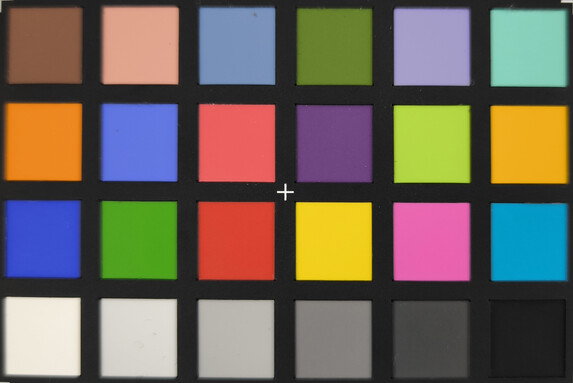

Scope of delivery and warranty – The Xiaomi phone comes with a power supply
In times when packages are being delivered with fewer and fewer accessories, it's nice to see that the 13T Pro comes with a modular 120-watt power supply as well as a data/charging cable, a case, a SIM tool and a short instruction manual including warranty information.
In the United States, local warranty laws cover the Xiaomi phone.
Input devices & operation – The Xiaomi phone with FaceUnlock
The Xiaomi phone features an astounding touchscreen with a super-fast 144-Hz refresh rate and a sampling rate of 480 Hz, meaning inputs are executed quickly and precisely. Its high sampling rate means that the touchscreen is refreshed up to 480 times per second, for example when gaming. The 13T Pro's vibration motor delivers crisp haptic feedback, however, it cannot compete with the vibrations on current flagships.
An optical fingerprint sensor integrated into the OLED display takes care of biometric security. It recognizes fingers reliably and quickly. The phone's 2D facial recognition isn't any slower in daylight, but it isn't quite as safe.
Display – The Xiaomi 13T Pro features OLED
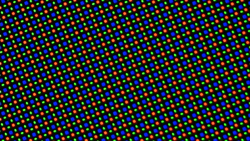
Xiaomi's high-end phone features a super fast 144-Hz 6-67 inch AMOLED display. Its resolution of 2,712 x 1,220 pixels leads it to have a high pixel density of 446 ppi, allowing for sharp depiction. Its refresh rate isn't dynamic like on an LTPO panel - instead, it was automatically switched between three settings (60 Hz, 120 Hz, 144 Hz) during our test period. Xiaomi has also stated that it supports additional refresh rates, namely 30 and 90 Hz.
The phone's maximum brightness is 1,200 nits according to Xiaomi, with peaks of up to 2,600 nits. Generally, our tests confirmed these values. When depicting a totally white screen with activated ambient light sensor, we measured a very high 1,252 cd/m² - only the Oppo Find X6 Pro and the Xiaomi 13 Ultra can currently get brighter. When depicting even parts of light and dark content (APL18), the 13T Pro was unexpectedly a little less bright, with values around 1,192 cd/m². However, we did measure an extremely high 2,489 cd/m² when playing back a 4K HDR pattern video.
Due to the installed OLED technology, Xiaomi uses pulse width modulation (including the resulting screen flickering) to control the display. The amplitude curve is very even across the entire brightness spectrum and remains constant at 120 Hz. However, the manufacturer itself speaks of a very high PWM frequency (2,880 Hz), which would feel much more pleasant, especially for sensitive people.
| |||||||||||||||||||||||||
Brightness Distribution: 96 %
Center on Battery: 1252 cd/m²
Contrast: ∞:1 (Black: 0 cd/m²)
ΔE ColorChecker Calman: 1.4 | ∀{0.5-29.43 Ø4.78}
ΔE Greyscale Calman: 2.3 | ∀{0.09-98 Ø5}
100% sRGB (Calman 2D)
Gamma: 2.23
CCT: 6590 K
| Xiaomi 13T Pro AMOLED, 2712x1220, 6.7" | Xiaomi 12T Pro 5G AMOLED, 2712x1220, 6.7" | Samsung Galaxy S23 Dynamic AMOLED 2x, 2340x1080, 6.1" | Sony Xperia 5 V OLED, 2520x1080, 6.1" | Nothing Phone (2) OLED, 2412x1080, 6.7" | Motorola Edge 40 Pro P-OLED, 2400x1080, 6.7" | |
|---|---|---|---|---|---|---|
| Screen | 3% | -42% | -7% | 7% | 2% | |
| Brightness middle (cd/m²) | 1252 | 913 -27% | 1125 -10% | 889 -29% | 951 -24% | 1056 -16% |
| Brightness (cd/m²) | 1230 | 913 -26% | 1122 -9% | 898 -27% | 948 -23% | 1055 -14% |
| Brightness Distribution (%) | 96 | 95 -1% | 96 0% | 97 1% | 98 2% | 92 -4% |
| Black Level * (cd/m²) | ||||||
| Colorchecker dE 2000 * | 1.4 | 1 29% | 3.2 -129% | 1.4 -0% | 1 29% | 1.28 9% |
| Colorchecker dE 2000 max. * | 3.1 | 2.4 23% | 4.9 -58% | 4.5 -45% | 2.2 29% | 2.85 8% |
| Greyscale dE 2000 * | 2.3 | 1.8 22% | 3.3 -43% | 1 57% | 1.6 30% | 1.7 26% |
| Gamma | 2.23 99% | 2.23 99% | 1.97 112% | 2.23 99% | 2.203 100% | 2.206 100% |
| CCT | 6590 99% | 6273 104% | 6504 100% | 6456 101% | 6516 100% | 6320 103% |
* ... smaller is better
Screen Flickering / PWM (Pulse-Width Modulation)
| Screen flickering / PWM detected | 120 Hz | ||
The display backlight flickers at 120 Hz (worst case, e.g., utilizing PWM) . The frequency of 120 Hz is very low, so the flickering may cause eyestrain and headaches after extended use. In comparison: 53 % of all tested devices do not use PWM to dim the display. If PWM was detected, an average of 8101 (minimum: 5 - maximum: 343500) Hz was measured. | |||
Measurement series with fixed zoom level and different brightness settings
We analyzed the AMOLED panel's color calibration using the analysis software Calman and a photo spectrometer. The panel is Dolby Vision, HDR10+ and HDR Vivid certified. Color deviations remained within the target area (<3) and the DeltaE values which we measured were very low.
In terms of adaptability, the MIUI interface is exemplary, as we already know from the 13 Pro. Besides three color profiles, users can individually adjust individual parameters, such as the color space or the saturation and gamma values - all in the advanced settings.
Display Response Times
| ↔ Response Time Black to White | ||
|---|---|---|
| 1.2 ms ... rise ↗ and fall ↘ combined | ↗ 0.6085 ms rise | |
| ↘ 0.592 ms fall | ||
| The screen shows very fast response rates in our tests and should be very well suited for fast-paced gaming. In comparison, all tested devices range from 0.1 (minimum) to 240 (maximum) ms. » 5 % of all devices are better. This means that the measured response time is better than the average of all tested devices (20.2 ms). | ||
| ↔ Response Time 50% Grey to 80% Grey | ||
| 0.94 ms ... rise ↗ and fall ↘ combined | ↗ 0.464 ms rise | |
| ↘ 0.48 ms fall | ||
| The screen shows very fast response rates in our tests and should be very well suited for fast-paced gaming. In comparison, all tested devices range from 0.165 (minimum) to 636 (maximum) ms. » 3 % of all devices are better. This means that the measured response time is better than the average of all tested devices (31.6 ms). | ||
Performance – The Xiaomi phone with a MediaTek SoC
The Dimensity 9200+ within the Xiaomi 13T Pro integrates a fast ARM Cortex X3 core (3.35 GHz), three A715 cores (3 GHz) and four A510 cores (2 GHz), and is one of MediaTek's most powerful mobile SoCs.
In our benchmarks, the Xiaomi phone's performance proved to range on a very high level - its values were very consistent, too. In quite a few tests, the 13T Pro did astoundingly well and even ranked ahead of the Sony Xperia 5 V with a Snapdragon 8 Gen 2. In the system benchmarks, the Xiaomi smartphone came below the Qualcomm Snapdragon 8+ Gen 1 in its predecessor.
The 13T Pro's single-core CPU performance was a bit higher during Geekbench 5.5 than the smartphones featuring the Snapdragon 8 Gen 2 - this was to be expected due to the slightly higher clocked Cortex X3 core - but a clear performance difference was visible in the current version 6.1.
| UL Procyon AI Inference for Android - Overall Score NNAPI | |
| Xiaomi 12T Pro 5G | |
| Xiaomi 13T Pro | |
| Average MediaTek Dimensity 9200+ (n=1) | |
| Average of class Smartphone (3769 - 81594, n=135, last 2 years) | |
| Samsung Galaxy S23 | |
| Sony Xperia 5 V | |
| Motorola Edge 40 Pro | |
| Nothing Phone (2) | |
The Immortalis-G715 MP11 features very high graphics performance. Although the 13T Pro came partly ahead of the competition featuring the Snapdragon 8 Gen 2 in some GFXBench calculations, the performance of the Adreno 740 was somewhat higher overall.
GFXBench (DX / GLBenchmark) 2.7: T-Rex Onscreen | 1920x1080 T-Rex Offscreen
GFXBench 3.0: on screen Manhattan Onscreen OGL | 1920x1080 1080p Manhattan Offscreen
GFXBench 3.1: on screen Manhattan ES 3.1 Onscreen | 1920x1080 Manhattan ES 3.1 Offscreen
GFXBench: on screen Car Chase Onscreen | 1920x1080 Car Chase Offscreen | on screen Aztec Ruins High Tier Onscreen | 2560x1440 Aztec Ruins High Tier Offscreen | on screen Aztec Ruins Normal Tier Onscreen | 1920x1080 Aztec Ruins Normal Tier Offscreen | 3840x2160 4K Aztec Ruins High Tier Offscreen
| 3DMark / Wild Life Extreme Unlimited | |
| Samsung Galaxy S23 | |
| Sony Xperia 5 V | |
| Motorola Edge 40 Pro | |
| Xiaomi 13T Pro | |
| Xiaomi 12T Pro 5G | |
| Nothing Phone (2) | |
| 3DMark / Wild Life Extreme | |
| Samsung Galaxy S23 | |
| Sony Xperia 5 V | |
| Motorola Edge 40 Pro | |
| Xiaomi 13T Pro | |
| Xiaomi 12T Pro 5G | |
| Nothing Phone (2) | |
| 3DMark / Wild Life Unlimited Score | |
| Sony Xperia 5 V | |
| Samsung Galaxy S23 | |
| Xiaomi 13T Pro | |
| Xiaomi 12T Pro 5G | |
| 3DMark / Sling Shot Extreme (ES 3.1) Unlimited Physics | |
| Sony Xperia 5 V | |
| Samsung Galaxy S23 | |
| Xiaomi 12T Pro 5G | |
| Xiaomi 13T Pro | |
| 3DMark / Sling Shot Extreme (ES 3.1) Unlimited Graphics | |
| Sony Xperia 5 V | |
| Samsung Galaxy S23 | |
| Xiaomi 12T Pro 5G | |
| Xiaomi 13T Pro | |
| 3DMark / Sling Shot Extreme (ES 3.1) Unlimited | |
| Sony Xperia 5 V | |
| Samsung Galaxy S23 | |
| Xiaomi 12T Pro 5G | |
| Xiaomi 13T Pro | |
| GFXBench (DX / GLBenchmark) 2.7 / T-Rex Onscreen | |
| Xiaomi 12T Pro 5G | |
| Samsung Galaxy S23 | |
| Motorola Edge 40 Pro | |
| Sony Xperia 5 V | |
| Xiaomi 13T Pro | |
| Nothing Phone (2) | |
| GFXBench (DX / GLBenchmark) 2.7 / T-Rex Offscreen | |
| Xiaomi 13T Pro | |
| Motorola Edge 40 Pro | |
| Sony Xperia 5 V | |
| Xiaomi 12T Pro 5G | |
| Samsung Galaxy S23 | |
| Nothing Phone (2) | |
| GFXBench 3.0 / Manhattan Onscreen OGL | |
| Xiaomi 12T Pro 5G | |
| Samsung Galaxy S23 | |
| Motorola Edge 40 Pro | |
| Sony Xperia 5 V | |
| Xiaomi 13T Pro | |
| Nothing Phone (2) | |
| GFXBench 3.0 / 1080p Manhattan Offscreen | |
| Sony Xperia 5 V | |
| Motorola Edge 40 Pro | |
| Xiaomi 13T Pro | |
| Xiaomi 12T Pro 5G | |
| Samsung Galaxy S23 | |
| Nothing Phone (2) | |
| GFXBench 3.1 / Manhattan ES 3.1 Onscreen | |
| Samsung Galaxy S23 | |
| Motorola Edge 40 Pro | |
| Sony Xperia 5 V | |
| Xiaomi 13T Pro | |
| Xiaomi 12T Pro 5G | |
| Nothing Phone (2) | |
| GFXBench 3.1 / Manhattan ES 3.1 Offscreen | |
| Motorola Edge 40 Pro | |
| Sony Xperia 5 V | |
| Xiaomi 13T Pro | |
| Samsung Galaxy S23 | |
| Xiaomi 12T Pro 5G | |
| Nothing Phone (2) | |
| GFXBench / Car Chase Onscreen | |
| Samsung Galaxy S23 | |
| Motorola Edge 40 Pro | |
| Sony Xperia 5 V | |
| Xiaomi 13T Pro | |
| Xiaomi 12T Pro 5G | |
| Nothing Phone (2) | |
| GFXBench / Car Chase Offscreen | |
| Motorola Edge 40 Pro | |
| Samsung Galaxy S23 | |
| Sony Xperia 5 V | |
| Xiaomi 12T Pro 5G | |
| Xiaomi 13T Pro | |
| Nothing Phone (2) | |
| GFXBench / Aztec Ruins High Tier Onscreen | |
| Samsung Galaxy S23 | |
| Sony Xperia 5 V | |
| Motorola Edge 40 Pro | |
| Xiaomi 13T Pro | |
| Nothing Phone (2) | |
| Xiaomi 12T Pro 5G | |
| GFXBench / Aztec Ruins High Tier Offscreen | |
| Samsung Galaxy S23 | |
| Motorola Edge 40 Pro | |
| Sony Xperia 5 V | |
| Xiaomi 13T Pro | |
| Xiaomi 12T Pro 5G | |
| Nothing Phone (2) | |
| GFXBench / Aztec Ruins Normal Tier Onscreen | |
| Samsung Galaxy S23 | |
| Motorola Edge 40 Pro | |
| Sony Xperia 5 V | |
| Xiaomi 12T Pro 5G | |
| Xiaomi 13T Pro | |
| Nothing Phone (2) | |
| GFXBench / Aztec Ruins Normal Tier Offscreen | |
| Motorola Edge 40 Pro | |
| Samsung Galaxy S23 | |
| Sony Xperia 5 V | |
| Xiaomi 13T Pro | |
| Xiaomi 12T Pro 5G | |
| Nothing Phone (2) | |
| GFXBench / 4K Aztec Ruins High Tier Offscreen | |
| Samsung Galaxy S23 | |
| Sony Xperia 5 V | |
| Motorola Edge 40 Pro | |
| Xiaomi 13T Pro | |
| Xiaomi 12T Pro 5G | |
| Nothing Phone (2) | |
In the browser benchmarks, the Xiaomi 13T Pro achieved average results compared to the competition and came quite a bit ahead of the 12T Pro. In everyday use, surfing the web using Chrome is super smooth on the high-end phone.
| Jetstream 2 - 2.0 Total Score | |
| Sony Xperia 5 V (Chrome 117.0.5938.60) | |
| Nothing Phone (2) (Chrome 114) | |
| Samsung Galaxy S23 (Chrome 109) | |
| Average of class Smartphone (23.8 - 387, n=149, last 2 years) | |
| Xiaomi 13T Pro (Chrome 117) | |
| Average MediaTek Dimensity 9200+ (n=1) | |
| Motorola Edge 40 Pro (Chrome 112) | |
| Xiaomi 12T Pro 5G (Chrome 107) | |
| Speedometer 2.0 - Result 2.0 | |
| Average of class Smartphone (15.2 - 643, n=122, last 2 years) | |
| Sony Xperia 5 V (Chrome 117.0.5938.60) | |
| Xiaomi 13T Pro (Chrome 117) | |
| Average MediaTek Dimensity 9200+ (n=1) | |
| Nothing Phone (2) (Chrome 114) | |
| Samsung Galaxy S23 (Chrome 109) | |
| Xiaomi 12T Pro 5G (Chrome 107) | |
| Motorola Edge 40 Pro (Chome 112) | |
| WebXPRT 4 - Overall | |
| Sony Xperia 5 V (Chrome 117.0.5938.60) | |
| Nothing Phone (2) (Chrome 114) | |
| Average of class Smartphone (27 - 306, n=145, last 2 years) | |
| Samsung Galaxy S23 (Chrome 109) | |
| Motorola Edge 40 Pro (Chrome 112) | |
| Xiaomi 13T Pro (Chrome 117) | |
| Average MediaTek Dimensity 9200+ (n=1) | |
| Xiaomi 12T Pro 5G (Chrome 107) | |
| WebXPRT 3 - Overall | |
| Sony Xperia 5 V (Chrome 117.0.5938.60) | |
| Nothing Phone (2) (Chrome 114) | |
| Average of class Smartphone (38 - 380, n=31, last 2 years) | |
| Motorola Edge 40 Pro (Chrome 112) | |
| Xiaomi 13T Pro (Chrome 117) | |
| Average MediaTek Dimensity 9200+ (n=1) | |
| Xiaomi 12T Pro 5G (Chrome 107) | |
| Octane V2 - Total Score | |
| Sony Xperia 5 V (Chrome 117.0.5938.60) | |
| Samsung Galaxy S23 (Chrome 109) | |
| Nothing Phone (2) (Chrome 114) | |
| Average of class Smartphone (2228 - 121337, n=197, last 2 years) | |
| Xiaomi 13T Pro (Chrome 117) | |
| Average MediaTek Dimensity 9200+ (n=1) | |
| Xiaomi 12T Pro 5G (Chrome 107) | |
| Motorola Edge 40 Pro (Chrome 112) | |
| Mozilla Kraken 1.1 - Total | |
| Motorola Edge 40 Pro (Chrome 112) | |
| Xiaomi 12T Pro 5G (Chrome 107) | |
| Average of class Smartphone (257 - 28190, n=154, last 2 years) | |
| Xiaomi 13T Pro (Chrome 117) | |
| Average MediaTek Dimensity 9200+ (n=1) | |
| Nothing Phone (2) (Chrome 114) | |
| Sony Xperia 5 V (Chrome 117.0.5938.60) | |
| Samsung Galaxy S23 (Chrome 109) | |
* ... smaller is better
The phone's fast UFS 4.0 storage achieved very high read rates of almost 4,000 MB/s in our benchmarks. However, the 13T Pro also shows increased write rates compared to its predecessor.
| Xiaomi 13T Pro | Xiaomi 12T Pro 5G | Samsung Galaxy S23 | Sony Xperia 5 V | Nothing Phone (2) | Motorola Edge 40 Pro | Average 512 GB UFS 4.0 Flash | Average of class Smartphone | |
|---|---|---|---|---|---|---|---|---|
| AndroBench 3-5 | -23% | -51% | -37% | -42% | -7% | -10% | -40% | |
| Sequential Read 256KB (MB/s) | 3983.36 | 1870.78 -53% | 3133.7 ? -21% 1686.71 ? -58% | 1812.23 -55% | 1949.5 -51% | 3434.4 -14% | 3689 ? -7% | 2228 ? -44% |
| Sequential Write 256KB (MB/s) | 3201.74 | 1726.23 -46% | 844 ? -74% 628.53 ? -80% | 1331.81 -58% | 1517.6 -53% | 2887.4 -10% | 3092 ? -3% | 1852 ? -42% |
| Random Read 4KB (MB/s) | 434.21 | 543.38 25% | 427.61 ? -2% 343.65 ? -21% | 359.71 -17% | 287.5 -34% | 451.3 4% | 385 ? -11% | 296 ? -32% |
| Random Write 4KB (MB/s) | 583.6 | 483.87 -17% | 156.69 ? -73% 130.26 ? -78% | 473.91 -19% | 403.8 -31% | 539 -8% | 474 ? -19% | 339 ? -42% |
Games – The Xiaomi 13T Pro manages 120 fps
In order to assess the Immortalis-G715 MP11's graphics power in everyday use, we analyzed three games from the Play Store using the application from our partner GameBench. Although the display supports a refresh rate of 144 Hz, we "only" managed to achieve 120 fps when playing the first-person shooter Dead Trigger 2, which should theoretically allow HFR gaming up to 144 Hz. However, this was to be expected according to the GFXBench results with a fixed refresh rate of 144 Hz.
When running PUBG Mobile, the typical 60 fps were possible using the HD setting, and the 13T Pro operated at a constant 40 fps using the highest detail level (UHD). The 90 fps option in the graphics menu was unfortunately not supported, so the high-end phone remained at 60 fps even with low detail settings.
Our third game, Genshin Impact, also supported 60 fps with reduced graphics. When the highest detail level was enabled, the frame rate was reduced to 30 fps.
Emissions – The Xiaomi smartphone is slightly throttled
Temperature
The case heated up quite a bit in our load scenario with a peak of over 45 °C. However, the heat development was on par with smartphones with the Snapdragon 8 Gen 2 after our one-hour stress test using the Burnout benchmark. A Xiaomi 13 Ultra, for example, got even warmer, with temperatures reaching over 48 °C.
Next, we checked the Dimensity 9200+'s behavior for thermal throttling with the help of the 3DMark stress tests. We measured values of about 75% and more in all stress tests, which attests to the 13T Pro system's relatively constant performance.
(-) The maximum temperature on the upper side is 45.4 °C / 114 F, compared to the average of 35.2 °C / 95 F, ranging from 21.9 to 247 °C for the class Smartphone.
(±) The bottom heats up to a maximum of 44.1 °C / 111 F, compared to the average of 34 °C / 93 F
(+) In idle usage, the average temperature for the upper side is 29.6 °C / 85 F, compared to the device average of 32.9 °C / 91 F.
3DMark Wild Life Stress Test
| 3DMark | |
| Wild Life Stress Test Stability | |
| Xiaomi 12T Pro 5G | |
| Xiaomi 13T Pro | |
| Samsung Galaxy S23 | |
| Motorola Edge 40 Pro | |
| Nothing Phone (2) | |
| Sony Xperia 5 V | |
| Wild Life Extreme Stress Test | |
| Xiaomi 12T Pro 5G | |
| Nothing Phone (2) | |
| Xiaomi 13T Pro | |
| Motorola Edge 40 Pro | |
| Samsung Galaxy S23 | |
| Sony Xperia 5 V | |
| Solar Bay Stress Test Stability | |
| Xiaomi 13T Pro | |
Speakers
The two Dolby Atmos certified speakers on the Xiaomi 13T Pro deliver a fairly balanced sound, although the mids could be a bit more even. Lower frequency ranges are also comparatively less present, and the Xiaomi phone cannot serve real depth with bass. It is noticeable that the upper speaker has considerably less depth than the one on the bottom.
If you want to use a wired audio output, you have to use the phone's USB-C port. Modern Bluetooth 5.4 is available wirelessly. The 13T Pro uses a wide range of supported codecs (SBC, AAC, aptX, aptX HD, aptX Adaptive, aptX TWS+, LDAC and LHDC V5).
Xiaomi 13T Pro audio analysis
(+) | speakers can play relatively loud (89.7 dB)
Bass 100 - 315 Hz
(-) | nearly no bass - on average 28% lower than median
(±) | linearity of bass is average (8.6% delta to prev. frequency)
Mids 400 - 2000 Hz
(+) | balanced mids - only 4.4% away from median
(+) | mids are linear (4.7% delta to prev. frequency)
Highs 2 - 16 kHz
(±) | higher highs - on average 5.2% higher than median
(+) | highs are linear (3.3% delta to prev. frequency)
Overall 100 - 16.000 Hz
(±) | linearity of overall sound is average (18.9% difference to median)
Compared to same class
» 23% of all tested devices in this class were better, 10% similar, 68% worse
» The best had a delta of 11%, average was 35%, worst was 134%
Compared to all devices tested
» 43% of all tested devices were better, 8% similar, 49% worse
» The best had a delta of 4%, average was 24%, worst was 134%
Samsung Galaxy S23 audio analysis
(+) | speakers can play relatively loud (91.5 dB)
Bass 100 - 315 Hz
(-) | nearly no bass - on average 22.5% lower than median
(+) | bass is linear (6.1% delta to prev. frequency)
Mids 400 - 2000 Hz
(±) | reduced mids - on average 5.8% lower than median
(+) | mids are linear (3.9% delta to prev. frequency)
Highs 2 - 16 kHz
(+) | balanced highs - only 4.5% away from median
(+) | highs are linear (1.8% delta to prev. frequency)
Overall 100 - 16.000 Hz
(±) | linearity of overall sound is average (16.2% difference to median)
Compared to same class
» 6% of all tested devices in this class were better, 5% similar, 90% worse
» The best had a delta of 11%, average was 35%, worst was 134%
Compared to all devices tested
» 25% of all tested devices were better, 5% similar, 69% worse
» The best had a delta of 4%, average was 24%, worst was 134%
Battery life – The Xiaomi phone with Hyper Charge
Power consumption
The Xiaomi 13T Pro supports the in-house HyperCharge fast charging technology at 120 watts. Charging the 5,000 mAh battery completely takes about 20 minutes when using Boost mode, whereas it takes about 29 minutes using the default mode straight out of the box. Fortunately, the matching power adapter is already included with the premium phone.
In idle mode, the power consumption we measured is inconspicuous for a smartphone with this configuration, but the consumption is quite high under load, with peaks of almost 16 watts.
| Off / Standby | |
| Idle | |
| Load |
|
Key:
min: | |
| Xiaomi 13T Pro 5000 mAh | Xiaomi 12T Pro 5G 5000 mAh | Samsung Galaxy S23 3900 mAh | Sony Xperia 5 V 5000 mAh | Nothing Phone (2) 4700 mAh | Motorola Edge 40 Pro 4600 mAh | Average MediaTek Dimensity 9200+ | Average of class Smartphone | |
|---|---|---|---|---|---|---|---|---|
| Power Consumption | 10% | 47% | 21% | 19% | 15% | 0% | 5% | |
| Idle Minimum * (Watt) | 0.99 | 1.05 -6% | 0.57 42% | 0.79 20% | 0.9 9% | 0.7 29% | 0.99 ? -0% | 0.842 ? 15% |
| Idle Average * (Watt) | 1.14 | 1.65 -45% | 0.74 35% | 1.08 5% | 1.1 4% | 0.8 30% | 1.14 ? -0% | 1.439 ? -26% |
| Idle Maximum * (Watt) | 1.34 | 1.72 -28% | 0.83 38% | 1.12 16% | 1.4 -4% | 1.3 3% | 1.34 ? -0% | 1.624 ? -21% |
| Load Average * (Watt) | 10.06 | 3.12 69% | 4.26 58% | 7.93 21% | 5 50% | 10 1% | 10.1 ? -0% | 7.03 ? 30% |
| Load Maximum * (Watt) | 15.94 | 6.02 62% | 6.16 61% | 8.78 45% | 10.4 35% | 13.7 14% | 15.9 ? -0% | 11.3 ? 29% |
* ... smaller is better
Power consumption: Geekbench (150 cd/m²)
Power consumption: GFXBench (150 cd/m²)
Runtimes
In our realistic battery tests, the 13T Pro's battery made very good runtimes of over 18 hours possible with WLAN enabled. These tests are performed with an adjusted display brightness of 150 cd/m². The Xiaomi phone lasted for about 21.5 hours in our video playback test with the Wi-Fi module disabled, which speaks for an optimized communication module.
| Xiaomi 13T Pro 5000 mAh | Xiaomi 12T Pro 5G 5000 mAh | Samsung Galaxy S23 3900 mAh | Sony Xperia 5 V 5000 mAh | Nothing Phone (2) 4700 mAh | Motorola Edge 40 Pro 4600 mAh | |
|---|---|---|---|---|---|---|
| Battery runtime | -7% | -2% | 11% | -15% | -10% | |
| Reader / Idle (h) | 30 | 29.2 -3% | 37.5 25% | 46.5 55% | 29.1 -3% | 35 17% |
| H.264 (h) | 21.6 | 21.4 -1% | 20.9 -3% | 24.9 15% | 20.8 -4% | 17.7 -18% |
| WiFi v1.3 (h) | 18.3 | 18.1 -1% | 15.4 -16% | 15.9 -13% | 15.2 -17% | 16.4 -10% |
| Load (h) | 7.1 | 5.4 -24% | 6.2 -13% | 6.2 -13% | 4.5 -37% | 5 -30% |
Pros
Cons
Verdict on the Xiaomi 13T Pro
The Xiaomi 13T Pro has been improved in many areas compared to its predecessor and as a result, it feels much more grown up. Beginning with its Leica camera system, which distances itself from the 200-MPix camera and low-res macro lens - instead, it now relies on less marketing-oriented lenses. In particular, its new 50-MPix main camera - optimized together with Leica - delivers great performance in every lighting condition. At best, it can compete with the Pixel 7 Pro. The same can be said for its five-year update guarantee - meaning the Xiaomi phone is finally on the same level as Samsung's S23 series.
Xiaomi has taken a big step with its T series, and the 13T Pro is a competitive high-end smartphone.
Its installed MediaTek Dimensity 9200+ may have done a bit worse in our benchmark tests than the competition powered by the Snapdragon 8 Gen 2 but even so, the Xiaomi phone delivers great performance. Furthermore, the 13T Pro proved to be more efficient in our realistic battery tests compared to the Galaxy S23 or the Motorola Edge 40 Pro.
Some compromises have to be made (similar to the 12T Pro) in the shape of a slow USB standard without the option to output picture, as well as a missing UHD option on its front-facing camera. The GNSS module also didn't have the best time during our test.
Price and availability
At the time of writing, the Xiaomi 13T Pro can be found for about US$780 on Amazon.
Xiaomi 13T Pro
- 10/10/2023 v7 (old)
Marcus Herbrich
Transparency
The selection of devices to be reviewed is made by our editorial team. The test sample was provided to the author as a loan by the manufacturer or retailer for the purpose of this review. The lender had no influence on this review, nor did the manufacturer receive a copy of this review before publication. There was no obligation to publish this review. As an independent media company, Notebookcheck is not subjected to the authority of manufacturers, retailers or publishers.
This is how Notebookcheck is testing
Every year, Notebookcheck independently reviews hundreds of laptops and smartphones using standardized procedures to ensure that all results are comparable. We have continuously developed our test methods for around 20 years and set industry standards in the process. In our test labs, high-quality measuring equipment is utilized by experienced technicians and editors. These tests involve a multi-stage validation process. Our complex rating system is based on hundreds of well-founded measurements and benchmarks, which maintains objectivity. Further information on our test methods can be found here.




